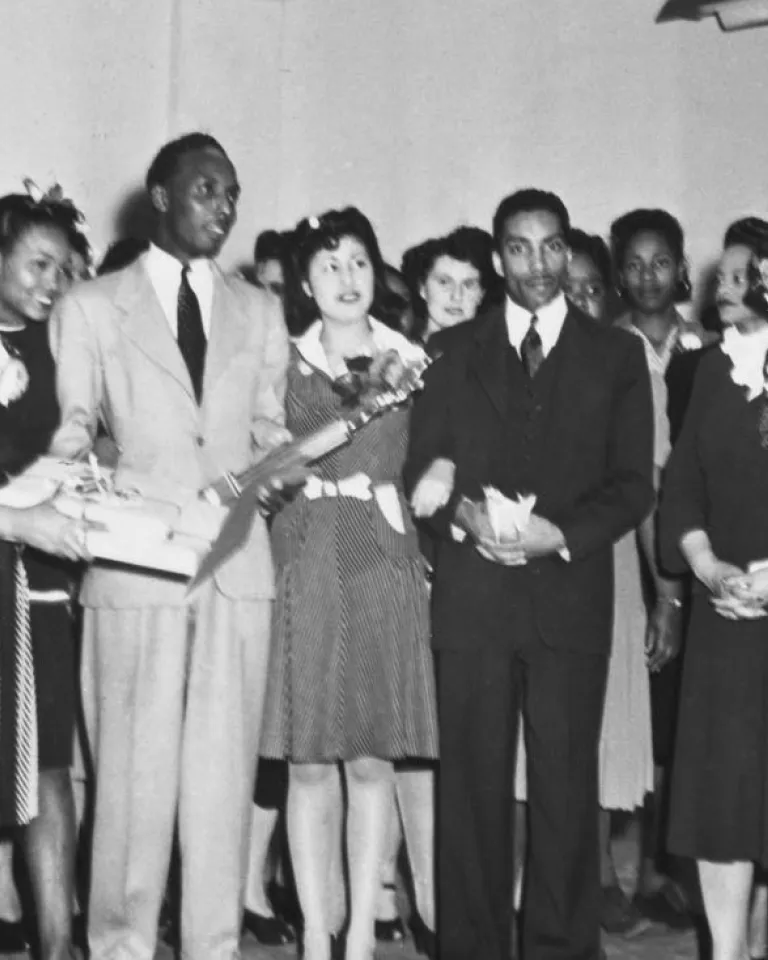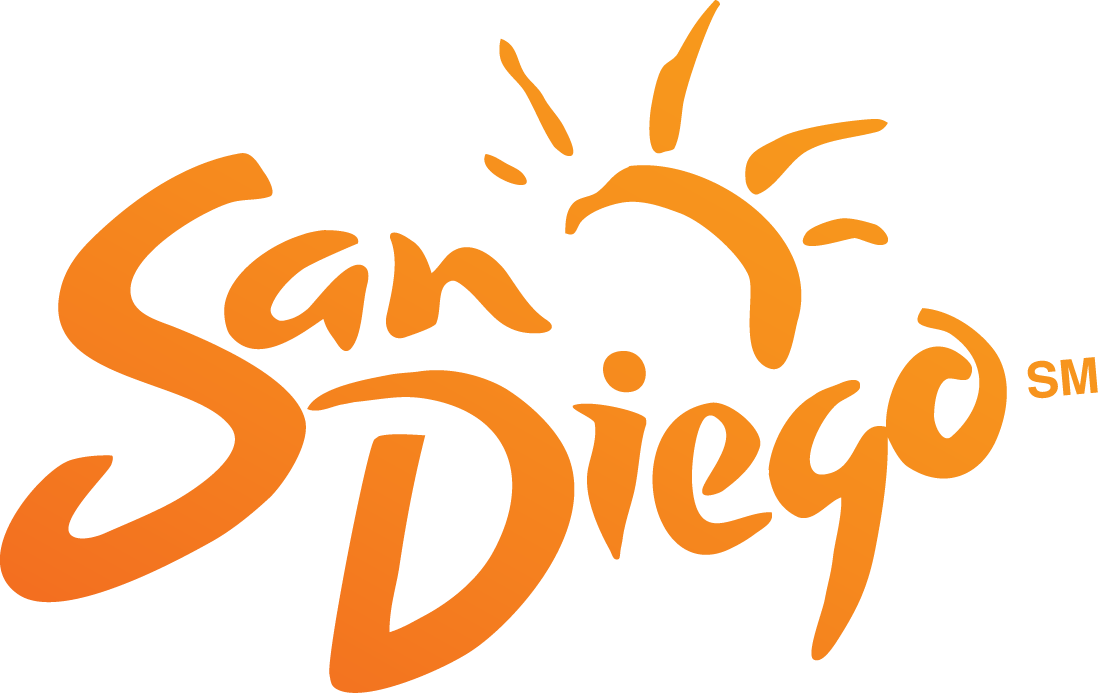The Black History of San Diego

Early Pioneers
Don Pio Pico
Don Pio Pico settled in San Diego in the 1820s. He was a politician, ranchero and merchant who served as the last Governor of Alta California under Mexican rule. Don Pico's ancestry is known to have African, Spanish and Indian ancestry.
Nathan Harrison
Nathan Harrison, a formerly enslaved man from Kentucky, lived from the 1850s to 1920 in a small cabin on Palomar Mountain, located in northeastern San Diego County. He was a homesteader and the county's first permanent Black resident. He became the most widely known Black San Diegans of his day, often photographed by tourists venturing up Palomar Mountain. Harrison died in 1920 at 100 years old.
Frederick Coleman
Frederick Coleman was a rancher who resided with a Native family in a valley north of the Cuyamaca Mountains in San Diego's rural East County. In 1869 while riding his horse, Coleman discovered gold in a creek near Julian which launched the county's first gold rush. A boom town sprang up near the spot called Coleman City. Coleman City is now a ghost town, located on State Highway 78 about 4 miles west of Julian.
America Newton
America Newton was a formerly enslaved woman and one of the earliest known Black women in San Diego County. She moved from Missouri in 1872 and owned an 80-acre homestead west of Julian. She helped launch the former gold mining town working as a laundress for miners.
Solomon and Cordelia Johnson
Solomon and Cordelia Johnson were instrumental in the formation of the first Black church in San Diego, the Bethel African Methodist Episcopal Church, in the late 1890s. The membership of the church met in the Johnson home until funds were raised to secure a permanent site. Although it relocated since first opening, the church is still one of the most popular Black churches in San Diego. Solomon also helped find several Black social organizations and brought a chapter of the NAACP to the area.
Isaac Atkinson
In 1892, Isaac Atkinson sold his bakery in Julian, moved to San Diego, and eventually started The Colonizer, the city's first Black-owned newspaper. Atkinson's Democratic views prompted the Republican San Diego Union newspaper to label him a "Judas" and Black Democrats as "freaks of nature."
Henrietta Goodwin
Henrietta Goodwin was the first Black graduate from the State Normal School of San Diego (now San Diego State University) in 1913. The School and San Diego Union newspaper did not mention Goodwin on its graduate roster; however, both her attendance ledger and registration record card indicate she graduated on January 30, 1913. Goodwin attended the school sporadically since 1908.
Entrepreneurs
Albert and Margaret Robinson
Albert Robinson, a formerly enslaved person from Missouri, and his wife Margaret, built, owned, and operated the Hotel Robinson in Julian from 1887 until Albert's death in 1915. Margaret continued ownership until 1921. Today, the Robinson Hotel is called the Julian Gold Rush Hotel.
Edward W. Anderson
Edward W. Anderson arrived in San Diego in the mid-1890s from Kentucky before beginning a successful laundry business at age 25 in 1897. As owner of IXL Laundry, he managed the largest steam laundry in the region with 35 employees. Anderson become one of the most successful businessmen and entrepreneurs in early San Diego. He is listed as owner-operator of the San Diego Rubbish Company, Economy Paper Company, and a hog farm in Coronado.
George A. Ramsey
In the 1920s, George A. Ramsey developed a business relationship with Robert Rowe, a white businessman and husband of Mabel Rowe, a Black woman. Ramsey and Rowe developed the idea to "build and operate a hotel, restaurant, and club that was developed by, and for, colored people" in San Diego's Gaslamp Quarter. The venture was named The Douglas Hotel and said to be named after activist Frederick Douglas.
The ballroom of the Douglas Hotel operated as a cabaret. Named the Creole Palace, it was the premier Black entertainment venue on the west coast featuring jazz, blues, a risqué chorus line show, and boogie-woogie performances. It hosted celebrities like Joe Louis, Louis Armstrong, Duke Ellington, Billie Holiday, and Dinah Washington. From its opening until the 1950s, the Douglas Hotel and the Creole Palace provided high-quality lodging and entertainment for Black people who could not book a room at San Diego's segregated hotels. Ramsey was affectionately known as the Mayor of San Diego's "Harlem of the West."
Howard "Skippy" Smith
Howard "Skippy" Smith was a stunt pilot and entrepreneur who moved to San Diego from Los Angeles in 1940. He worked as a drop-tester, parachute packer, and inspector at the Standard Parachute Company. Eager to run his own business and having impressed the company's president, he was awarded the subcontract for pilot chutes.
Smith teamed with Eddie "Rochester" Anderson and opened the Pacific Parachute Company (PPC) which sewed and packed parachutes for the military. Smith refused to include investors who advocated segregation of the work force, and he employed one of the few integrated workforces in San Diego. He also insisted on giving management opportunities to females. PPC produced nearly 50,000 parachutes during its first year in business. In 1943, PPC earned the title of "Top Black Owned Business in the United States" from Time magazine and won the National Negro Business League's Spaulding Award as the number one African-American business.
Sports Icons
Archie Moore
Archie "the Mongoose" Moore started his professional boxing career in 1935 at the Coliseum Federal Athletic Club, which opened in 1924 in downtown's East Village. From 1938-1944, Archie fought 30 matches at the Coliseum with only 2 losses. Both Archie Moore and Ken Norton were headliners at the Coliseum, and both called San Diego their home. Moore lived in San Diego until his death in 1998. The Coliseum building is now home to Punch Bowl Social and located at 1485 E Street.
Ken Norton
Ken Norton faced Muhammad Ali for their first fight on March 31, 1973 at the San Diego Sports Arena. Norton started boxing while stationed at Marine Corps Base Camp Pendleton in North San Diego County. Norton broke Ali's jaw and won the fight in a split decision. It was the only fight of their trilogy that Norton won.
Johnny Ritchey
In 1948, Johnny Ritchey was the first Black baseball player to join the minor league San Diego Padres. Ritchey broke the Pacific Coast League's color barrier one year after Jackie Robinson debuted with the major league Brooklyn Dodgers.
Joe Louis
In 1952, celebrated boxed Joe Louis was invited to play as an amateur in the annual San Diego Open (now the Farmers Insurance Open). The PGA was reluctant to allow Louis to enter the event due to its bylaw at the time limiting PGA membership to Caucasians. Louis used his celebrity, went to the press, and revealed the PGA as the last major sport in America in which Black people were barred. The tactic worked, and Louis became the first Black golfer to compete in a PGA-sanctioned event. The "Caucasian only" clause in the PGA's constitution was not amended until November 1961.
Tony Gwynn
Born in Los Angeles, Tony Gwynn was a star athlete at San Diego State University in both baseball and basketball. Nicknamed "Mr. Padre," Gwynn went on to play professional baseball for 20 seasons (1982-2001) as right fielder for the San Diego Padres. With eight batting titles in his career, the left-handed hitter is considered one of the best and most consistent hitters in baseball history. Gwynn spent his entire career at the San Diego Padres and played in the only two World Series appearances in the franchise's history. Gwynn was inducted into the Baseball Hall of Fame in 2007.
Historic Dates and Facts
1880-1890s
The 1880 census listed 55 Black Americans living in San Diego County, of which 33 resided in Julian. By 1890, the Black population rose to 289 in San Diego County with Black residents predominantly living in downtown.
During the latter part of the 1800s, San Diego's Black population rose dramatically, though it was still less than one percent of the population.
Between 1885 and 1890, the Colored Voters Political Club became the first Black political club in San Diego. With the increase in population, Black San Diegans came together to form groups in which they could share and express themselves in ways which were not permitted in a predominately Caucasian setting.
1900s
Started in the early 1900s, the Acme Social Club and the Fidelity Lodge #10 of the Prince Hall Masons were established when Black San Diegans began to own more businesses and make inroads into the local economic mainstream.
1919
The San Diego branch of the National Association for the Advancement of Colored People was inaugurated.
1960s
Racial tensions by Black San Diegans began to escalate in the 1960s due to segregated neighborhoods and general inequality. Protests about segregation in specific San Diego neighborhoods were held in front of the Woolworth Department Store in downtown. In 1963, a racial equality sit-in was held at the SDG&E building.
The Congress of Racial Equality (CORE) members also protested outside the iconic El Cortez Hotel in downtown at the time. The California Real Estate Association was meeting inside to determine whether or not it would support Proposition 14.
California Proposition 14 was a November 1964 ballot proposition that amended the California state constitution to nullify the 1963 Rumford Fair Housing Act, thereby allowing property sellers, landlords, and their agents to discriminate on ethnic grounds when selling or letting accommodation, as they had been permitted to do before 1963.
1964
Dr. Martin Luther King Jr. was on a speaking tour of California cities. He addressed crowds at both California Western University (now Point Loma Nazarene University) and San Diego State College (now San Diego State University) on the same day. Dr. King spoke out against California's Proposition 14. Dr. King's address gave national context to the issues of segregation and racism prevalent in San Diego and California.
The Proposition 14 ballot measure passed in November 1964, in effect repealing the Rumford Fair Housing Act of 1963.
Places to Visit
1400 Block of J Street, downtown
A monument highlighting San Diego's Black history is located next to the Carter/Vine Hotel in downtown's East Village.
2032 Main Street, Julian
The Robinson Hotel (now called the Julian Gold Rush Hotel) is the oldest continuously operated hotel in Southern California.
Tenth Avenue and Island Street, downtown
The original IXL Laundry, owned by Edward W. Anderson, was located at 546 Seventh Avenue and later moved to this block.
401 J Street, downtown
The Carter/Vine Hotel was owned and operated by Black couple Alonzo and Katie Carter during 1934–1956.
542 Sixth Avenue, downtown
In 1919, Black resident Robert North purchased and operated Hotel North until 1924. In 1938, Lucille Simmons took over the hotel and renamed it the Simmons Hotel. She managed and lived there until her death in 1964.
520 Sixth Avenue, downtown
In 1924, Robert North and his wife Helen purchased the Hotel DeLuxe and relocated there from Hotel North.
421 Market Street, downtown
The Timken Building was once home to the Brighton Hotel and managed by Anna Brown, a local Black businesswoman.
501 Seventh Avenue, downtown
Established in 1887, the former Clermont/Coast Hotel was one of the first hotels to advertise to both Caucasian and Black guests during the 1915-1916 Panama-California Exposition in Balboa Park.
Sources
- San Diego History Center – Black History Timeline
- Centre City Development Corporation (CCDC), Downtown San Diego African-American Heritage Study (Prepared by: Mooney & Associates for the CCDC, 2004)
- The Amazing True Story of Nathan Harrison by Daniel Weiss Archeology Today – 2021
